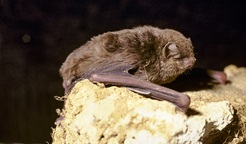Western Escarpment walking track
Malabar Headland National Park
Learn more
Learn more about why this park is special
Western Escarpment walking track is in Malabar Headland National Park. Here are just some of the reasons why this park is special:
Ancient landscapes

Malabar Headland National Park is part of the traditional land of the Bidjigal and Gadigal People. Malabar Headland is a significant area (Bora Ground) for Aboriginal people. The word Bora is used throughout Eastern Australia to describe an initiation site or ceremony.
Plants a plenty

Alive with wildflowers in spring, Malabar Headland contains the last known population of the once extensive Port Jackson mallee in Sydney’s eastern suburbs. It’s also home to the eastern suburbs banksia scrub – one of the most critically endangered ecological communities in NSW. The park supports at least 7 distinct plant communities and this diversity of habitats is only matched in the eastern suburbs in Kamay Botany Bay National Park.
- Western Escarpment walking track Get back to nature on Western Escarpment walking track in Sydney's Malabar Headland National Park, near Maroubra. This short track through native heath boasts coastal views, bird life and wildflowers.
Dramatic cliffs

Malabar Headland is home to many of the pre-colonial landscapes that once occurred throughout the eastern suburbs. You’ll find coastal rock platforms, sea cliffs and headlands in the eastern section, and sandstone escarpments and remnants of aeolian sand dunes in the western section. These were believed to have been formed as a result of the last major glacial period.
Walk the coast

If you’re keen for a walk with never-ending ocean views as your backdrop, follow the rugged coastal cliffs along Boora Point walking track which links to the iconic eastern beaches coastal walk. During whale watching season, you might even spot a whale or two on their annual migration.
Plants and animals protected in this park
Animals
-

Common ringtail possum (Pseudocheirus peregrinus)
Commonly found in forests, woodlands and leafy gardens across eastern NSW, the Australian ringtail possum is a tree-dwelling marsupial. With a powerful tail perfectly adapted to grasp objects, it forages in trees for eucalypt leaves, flowers and fruit.
-

Eastern bentwing-bat (Miniopterus schreibersii oceanensis)
Eastern bentwing-bats congregate in caves across the east and north-west coasts of Australia, in colonies of up to 150,000. These small Australian animals weigh around 13-17g and can reach speeds of up to 50km per hour. Eastern bentwing-bats use both sight and echolocation to catch small insects mid-air.
-

Humpback whale (Megaptera novaeangliae)
The humpback whale has the longest migratory path of any mammal, travelling over 5000km from its summer feeding grounds in Antarctica to its breeding grounds in the subtropics. Its playful antics, such as body-rolling, breaching and pectoral slapping, are a spectacular sight for whale watchers in NSW national parks.
-

White-bellied sea eagle (Haliaeetus leucogaster)
White-bellied sea eagles can be easily identified by their white tail and dark grey wings. These raptors are often spotted cruising the coastal breezes throughout Australia, and make for some scenic bird watching. Powerful Australian birds of prey, they are known to mate for life, and return each year to the same nest to breed.
-

Yellow-tailed black cockatoo (Calyptorhynchus funereus)
The yellow-tailed black cockatoo is one of the largest species of parrot. With dusty-black plumage, they have a yellow tail and cheek patch. They’re easily spotted while bird watching, as they feed on seeds in native forests and pine plantations.
Look out for...
Eastern bentwing-bat
Miniopterus schreibersii oceanensis

Eastern bentwing-bats congregate in caves across the east and north-west coasts of Australia, in colonies of up to 150,000. These small Australian animals weigh around 13-17g and can reach speeds of up to 50km per hour. Eastern bentwing-bats use both sight and echolocation to catch small insects mid-air.
